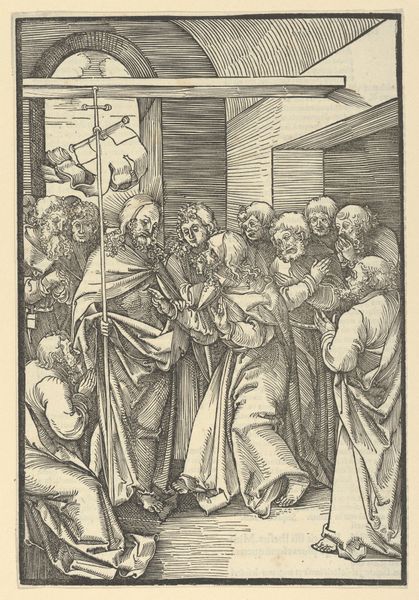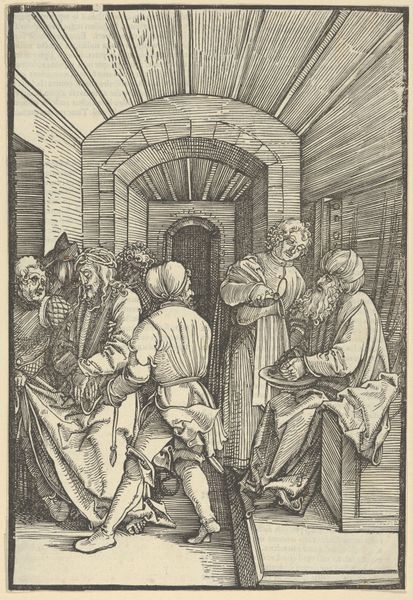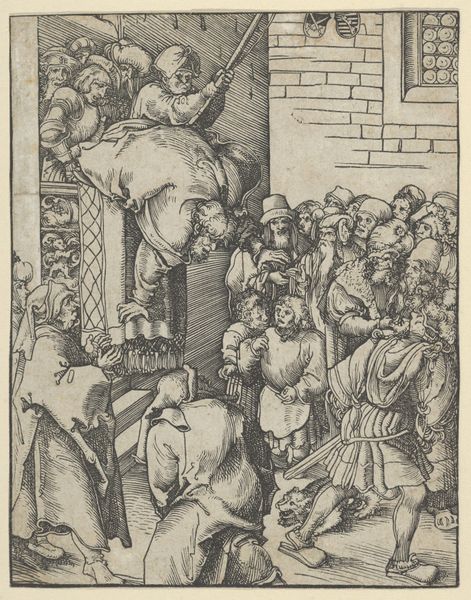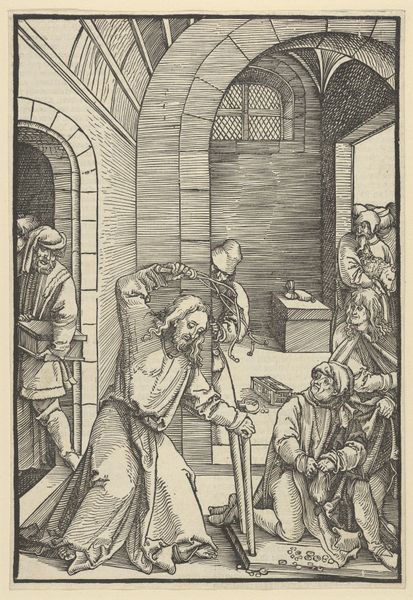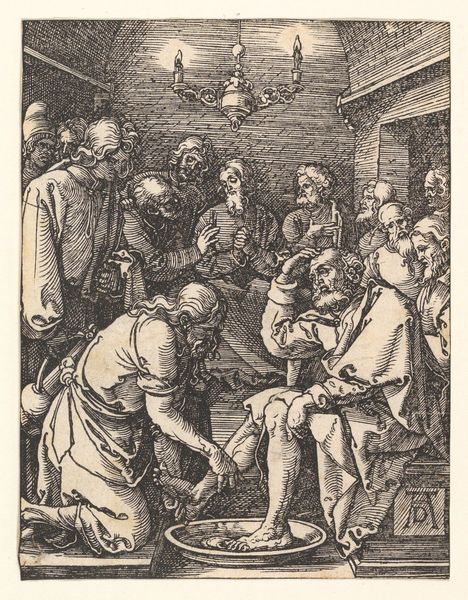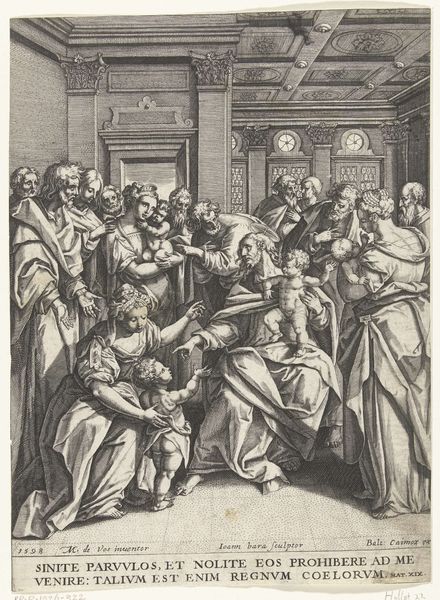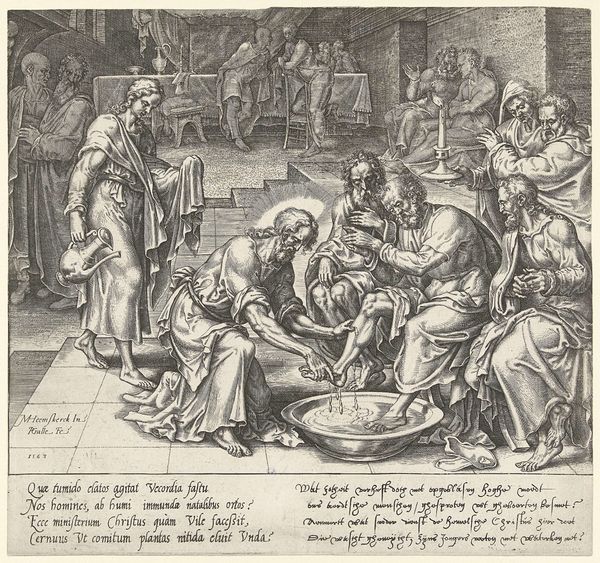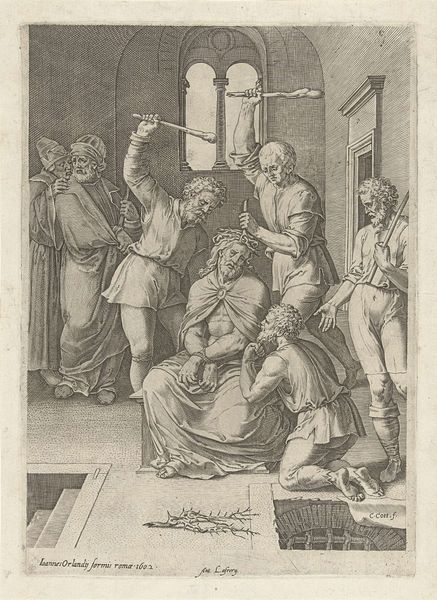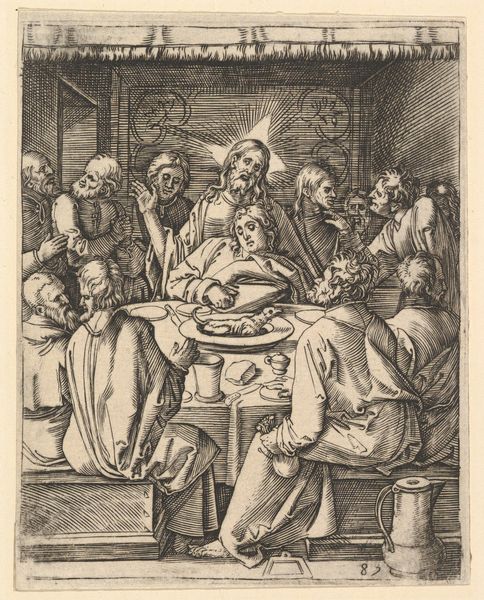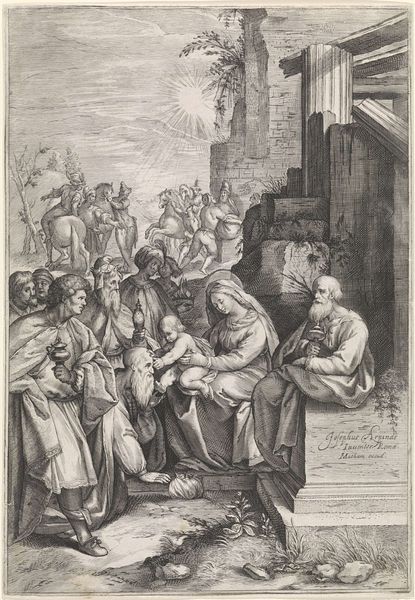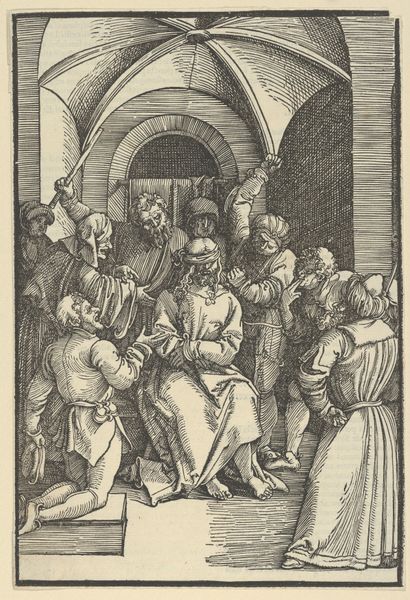
Christ Washing Saint Peter's Feet, from Speculum passionis domini nostri Ihesu Christi 1507
0:00
0:00
drawing, print, woodcut
#
drawing
# print
#
figuration
#
woodcut
#
history-painting
#
northern-renaissance
#
christ
Dimensions: Sheet: 9 1/2 × 6 3/8 in. (24.1 × 16.2 cm)
Copyright: Public Domain
Curator: This is Hans Schäufelein's "Christ Washing Saint Peter's Feet," a woodcut created around 1507, part of his "Speculum passionis domini nostri Ihesu Christi." You can find it at the Metropolitan Museum of Art. Editor: It’s intense! The sharp contrasts of the woodcut, the claustrophobic space, the men all crammed together… It feels like a powder keg of suppressed emotions. Curator: Schäufelein was working within the Northern Renaissance tradition, absorbing influences from Dürer but with his own distinctive, more dramatic flair. These prints played a vital role in disseminating religious narratives to a broader audience. Think about the social impact: making biblical stories accessible. Editor: Absolutely. But beyond accessibility, there's this potent visualization of humility and service in action. Christ, literally at the feet of Saint Peter. But also, think about the patriarchal overtones – Christ washes the feet of an apostle in a gesture loaded with submission. How can we, in a post-colonial context, address those implications? Curator: Well, this was part of a larger series focused on the Passion, which would have been viewed through the lens of penance, redemption, and of course, faith, but in Northern Renaissance society. The art also served didactic and political roles: it reinforced established social and religious hierarchies. Editor: Yes, but within the context of social hierarchies: it is a demonstration of power. Considering its message from a radical Christian activist perspective: we must encourage ourselves to embrace discomfort in fighting existing class and gender dynamics that continue oppressing marginalized communities, as it also seems apparent here. Curator: And remember that woodcuts, while relatively affordable, still had a value; these images circulated within specific socio-economic circles and played a role in constructing and maintaining social identities. They weren't mass-produced like modern prints. Editor: Seeing that context gives a stronger edge to what’s at work here, which makes it far more urgent, still, 500 years later. Curator: Indeed. This particular woodcut tells us much about the art market, religious devotion, and cultural values of the time. Editor: Looking closely at the past is never a waste. It will either strengthen one's convictions or incite positive change through critical examination of history's flaws.
Comments
No comments
Be the first to comment and join the conversation on the ultimate creative platform.
